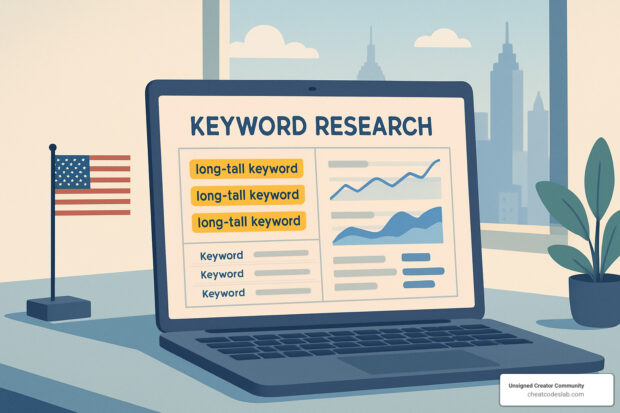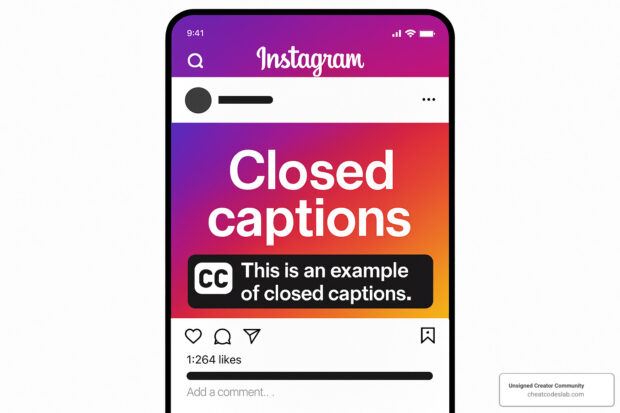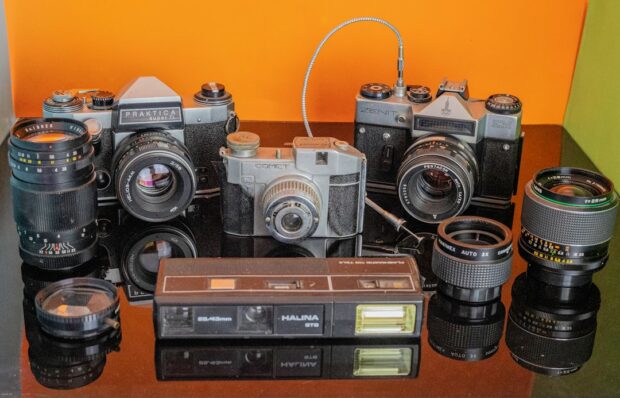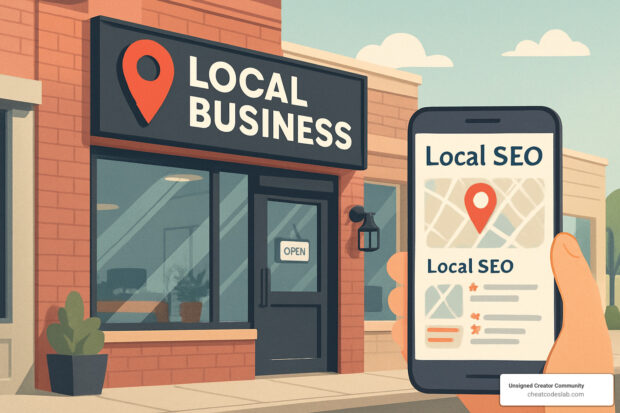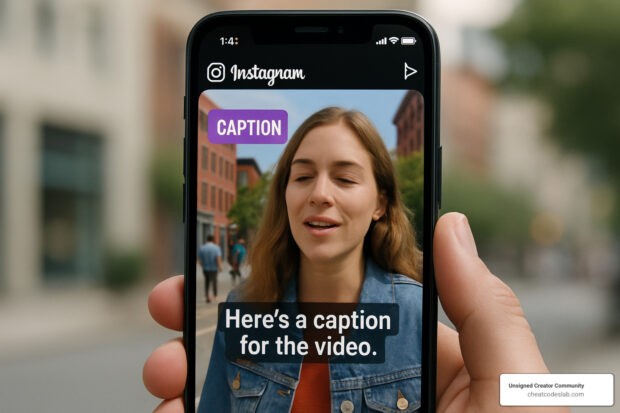
The Power of Strategic Brand Identity
Hey there! I’m digitaljeff, founder of CheatCodesLab. Having helped craft strategies for top personal brands that have generated over 1 billion social media views, I’ve seen how powerful great branding can be. Let’s explore what makes branding examples truly shine in today’s crowded marketplace.
Think about the last time you recognized a company instantly from just a glimpse of their logo or colors. That instant recognition? That’s successful branding at work. The best branding examples create an immediate emotional connection that sticks with you.
Did you know that 81% of consumers need to trust a brand before they’ll consider buying? And it typically takes 5-7 impressions before someone even becomes aware of your brand. Those first few touchpoints matter tremendously.
Take a look at these standout brands and what makes them special:
| Brand | Key Strategy | Notable Element |
|---|---|---|
| Apple | Minimalist design | Simple logo with consistent visual language |
| Nike | Emotional connection | “Just Do It” slogan with aspirational messaging |
| Coca-Cola | Brand consistency | Unchanged logo and distinctive red color |
| Patagonia | Purpose-driven | Environmental activism integrated into identity |
| Glossier | Community focus | Customer feedback shapes product development |
What these companies understand is that branding goes far beyond a pretty logo or catchy tagline. It’s a strategic framework that communicates your core values, sets you apart from competitors, and builds genuine emotional connections with your audience.
When brands maintain consistent presentation across all platforms, they can see revenue increases of up to 23%. That consistency creates trust, and trust creates loyalty.

Whether you’re building a personal brand or growing a business, understanding these fundamentals is crucial. Your brand identity is the foundation everything else builds upon.
If you’re just getting started with developing your own brand, you might want to check out our guides on personal brand awareness or self branding strategy. And for those in specific industries, resources like our guide to branding for real estate agents can provide custom insights.
Throughout this article, we’ll dive deeper into outstanding branding examples that demonstrate these principles in action. You’ll see exactly how the world’s most magnetic brands have built their identities and how you can apply those same strategies to your own brand journey.
Building a Magnetic Brand: Identity + Positioning Foundations
Before diving into specific branding examples, let’s establish what makes a brand identity truly magnetic. Think of brand identity as your company’s personality – it’s how people recognize you and what they remember about your business.
Core Elements of Brand Identity
Every successful brand identity consists of several key components that work together to create a lasting impression. Your logo is the visual symbol that represents your brand – think about how instantly recognizable Apple’s bitten apple or Nike’s swoosh have become. Your color palette does more than look pretty; it evokes specific emotions and creates associations in customers’ minds. Typography (the fonts you choose) conveys your brand’s personality – whether serious and traditional or playful and modern. The imagery you use, from photos to illustrations, tells your visual story. And your brand voice determines how you communicate through words – friendly, authoritative, quirky, or serious.

Did you know color alone improves brand recognition by up to 80%? That’s why brands like Tiffany & Co. have trademarked their signature blue. When all these elements work together consistently, they create a cohesive identity that sticks in consumers’ minds and builds trust with every interaction.
Brand Positioning: Standing Out in a Crowded Market
While brand identity answers “who you are,” brand positioning addresses “where you stand” compared to competitors. The most effective brands clearly position themselves using one of several strategies:
Value-based positioning emphasizes the unique value you provide – like how Tesla positions electric vehicles as high-performance technology products, not just eco-friendly cars. Quality-based positioning highlights superior craftsmanship, as Patagonia does with their commitment to “Build the Best Product, Cause No Unnecessary Harm.” Price-based positioning makes affordability your key differentiator, which Dollar Shave Club nailed with “Shave Time. Shave Money.” And differentiation positioning showcases something nobody else offers – like Airbnb’s unique local experiences versus standard hotel stays.
The most effective positioning is captured in a brand essence chart with seven components that clarify your core value proposition: attributes (what your brand has), benefits (what it does), personality (how it behaves), authority sources (why people should believe you), customer implications (what customers get), emotional impact (how customers feel), and your positioning statement (your unique market position).
As Philip Krim, CEO and Co-founder of Casper, wisely notes: “A strong brand isn’t just what you say about yourself—it’s what customers say about you when you’re not in the room.”
More info about Self Branding Strategy
Branding Examples in Action: Core Elements Breakdown
Let’s look at how real brands bring these elements to life:
Visual Identity Examples
The story behind the Nike swoosh shows the power of a simple logo. Designed by Carolyn Davidson in 1971 for just $35, it represents the wing of the Greek goddess Nike. Today, it’s worth billions and recognized worldwide – proving that sometimes the simplest designs make the biggest impact.
Color choices aren’t random – they’re strategic. Coca-Cola’s vibrant red evokes excitement and passion. Facebook’s blue suggests trust and reliability. Whole Foods’ green represents health and nature. These color associations work on a subconscious level, shaping how we feel about brands before we even think about them.
Apple’s consistent use of San Francisco and Helvetica Neue fonts creates a clean, modern feel that perfectly complements their product design. This shows how typography isn’t just about readability – it’s about reinforcing your brand personality with every word.

Voice & Tone Examples
Brand voice can be as distinctive as a visual logo. Trader Joe’s product descriptions feel like recommendations from a knowledgeable friend: “if an item doesn’t pull its weight in our stores, it goes away to gangway for something else.” This casual, insider tone makes customers feel like part of a community.
Death Wish Coffee doesn’t mince words with its bold and provocative positioning as “The World’s Strongest Coffee.” Their packaging featuring a skull and crossbones appeals directly to those seeking an extreme caffeine experience – not trying to please everyone, but strongly connecting with their target audience.
Dollar Shave Club’s launch video showcased irreverent humor (“Our blades are f***ing great”) that perfectly matched their disruptive business model. This quirky, offbeat approach helped them stand out in a traditionally serious industry dominated by giants like Gillette.
Buyer Persona Alignment
The best brands deeply understand who they’re talking to. Glossier founder Emily Weiss captured this perfectly: “beauty isn’t built in a boardroom—it happens when you’re a part of the process.” This philosophy explains why Glossier built its identity around real customer feedback and community engagement, creating products that feel personally designed for their users.
From Statement to Reality: Writing Your Brand Positioning
Creating an effective brand positioning statement follows this simple formula:
For [Target Audience], [Brand Name] is the only [Your Market] that [Differentiation] because [Proof Point].
For example, Tesla’s might read: “For environmentally conscious drivers who want performance, Tesla is the only electric vehicle manufacturer that delivers high-performance cars with zero emissions because our proprietary technology enables longer range and faster acceleration than any competitor.”
Crafting positioning that works requires thorough audience research to understand your ideal customers’ pain points and desires. You’ll need competitive analysis to identify market gaps you can fill. Your positioning needs proof points – actual evidence supporting your claims. And finally, you should test your positioning with your target audience to ensure it resonates.
| Positioning Strategy | Focus | Example Brand | Key Message |
|---|---|---|---|
| Value-based | Unique benefits | Tesla | Sustainable technology with premium performance |
| Quality-based | Superior craftsmanship | Patagonia | Durable products that last generations |
| Price-based | Affordability | Southwest Airlines | “Low Fares. Nothing to Hide.” |
| Differentiation | Unique offering | Airbnb | “Belong Anywhere” (vs. standard hotels) |
How do you know if your positioning is working? Track key performance indicators like brand awareness surveys, market share analysis, customer feedback and sentiment, social media engagement, and conversion rates. These metrics will tell you if your brand is landing with audiences the way you intended.
15 Inspiring Branding Examples to Learn From
Let’s explore some truly remarkable branding examples that will spark your creativity and show you what excellence looks like across different industries and company sizes.

1. Casper: Reimagining the Mattress Industry
Remember when buying a mattress meant an awkward showroom experience with a pushy salesperson? Casper changed all that. Their genius was changing mattresses from a technical purchase into a lifestyle product with a brand that feels like a cozy friend.
Their soothing beige and blue colors paired with playful hand-drawn illustrations make the entire sleep experience feel approachable. What I love about Casper is how they simplified the overwhelming mattress market with their “perfect mattress for everyone” positioning. By pioneering the direct-to-consumer model with that famous 100-night trial, they turned a traditionally boring purchase into something people actually get excited about sharing on social media.
2. Patagonia: Purpose-Driven Branding
If there’s one brand that lives its values, it’s Patagonia. Their mission statement says it all: “Build the best product, cause no unnecessary harm, use business to inspire and implement solutions to the environmental crisis.” But unlike many companies with lofty mission statements, Patagonia actually walks the talk.
Remember when they donated $10 million of their Black Friday sales to environmental nonprofits? Or their “Don’t Buy This Jacket” campaign that actually increased sales by aligning with customer values? Their rugged imagery showcasing untamed nature isn’t just marketing—it’s a reflection of what they genuinely care about. Patagonia proves that when your branding examples stand for something bigger than your products, customers become passionate advocates.
3. Spotify: Personalization at Scale
Spotify has mastered something truly special: data-driven branding that somehow feels deeply personal. Their distinctive green creates instant recognition, but it’s their Spotify Wrapped campaign that shows true branding brilliance. By turning user data into shareable personal stories, they’ve created an annual cultural moment that millions eagerly anticipate.
Their playful, contemporary voice makes a tech platform feel human. And those personalized playlists with names like “Find Weekly” make each of their 406 million users feel understood. Spotify’s 2015 rebrand transformed their sonic brand into what they called a “treat for the eyes,” showing how technology can create genuine emotional connections.
4. Chobani: Elevating Everyday Products
Who knew yogurt could be sexy? Chobani did. Their distinctive packaging with that simple green backdrop and appetizing imagery transformed the yogurt aisle. But what makes Chobani’s branding special goes beyond packaging—it’s how they weave in founder Hamdi Ulukaya’s immigrant success story and their mission of making better food accessible to more people.
Their evolution from traditional Greek imagery to a clean, modern design shows how even a commodity product can be liftd through thoughtful branding that connects quality, heritage, and accessibility. Chobani is proof that branding examples don’t need to be flashy tech companies to make an impact.
5. Hydro Flask: Community and Customization
Hydro Flask built a brand empire around water bottles—yes, water bottles! Their distinctive silhouette and vibrant colors have become status symbols on college campuses and hiking trails alike. Their brand statement captures their essence perfectly: “Mother Nature is the best designer there is. There’s never anything extra—every choice is made for a reason.”
What’s genius about their approach is the #MyHydro customization program that encourages sharing and community building. By connecting their product to sustainability (reducing single-use plastic waste) and personal expression through color choices, they’ve created emotional attachment to what could have been just another container. The result? People don’t just buy a Hydro Flask; they join a tribe.
6. Tesla: Disrupting Through Innovation
Tesla breaks all the rules of traditional automotive marketing—and that’s exactly what makes their branding so powerful. While other car companies spend billions on TV commercials, Tesla spends… basically nothing on traditional advertising. Instead, they rely on word-of-mouth and Elon Musk’s personal brand (for better or worse).
Their mission to “accelerate the world’s transition to sustainable energy” positions them as more than a car company. Their products create their own buzz through performance, and their company-owned showrooms replace the dreaded dealership experience. Tesla shows how a brand can disrupt an entire industry by challenging conventions and letting innovation speak for itself.
7. Nike: Emotional Storytelling
Has any tagline ever been more powerful than “Just Do It”? Nike’s branding examples showcase the ultimate in emotional connection. Their simple swoosh logo somehow manages to convey motion and victory in one neat curve. But Nike’s real magic is in how they focus on the athlete in everyone—not just elite performers.
Their advertising tells stories that transcend product features, connecting shoes and apparel to our deepest aspirations. And they’ve masterfully extended from physical products to digital communities like Nike Run Club. Nike demonstrates the power of connecting products to emotions rather than just functional benefits—they don’t sell shoes; they sell the feeling of achievement.
8. Bumble: Values-Based Differentiation
In the crowded world of dating apps, Bumble stood out by leading with values. Their bright yellow branding immediately differentiates them, but it’s their mission—empowering women to make the first move—that truly defines them. Their friendly, approachable illustrations create a safe-feeling environment in contrast to other dating apps.
What’s particularly clever about Bumble’s branding is how they’ve expanded from dating to friendship (Bumble BFF) and business networking (Bumble Bizz), showing how a strong brand foundation can support multiple offerings. Bumble proves that leading with values can create a distinctive position even in a saturated market.
9. Dollar Shave Club: Humor as Brand Strategy
“Our blades are f***ing great.” With that line in their launch video, Dollar Shave Club revolutionized men’s grooming through irreverent branding. Founder Michael Dubin’s hilarious explainer video went viral not because of special effects but because of authentic personality.
Their “Shave Time. Shave Money” tagline perfectly captures their value proposition, while their simple, straightforward packaging features witty copy that makes you smile in the shower. Their conversational, humorous voice created such a powerful differentiation that Unilever acquired them for $1 billion. Dollar Shave Club shows how personality can be your greatest asset, especially in traditionally boring categories.
10. Trader Joe’s: Experiential Retail Branding
Shopping at Trader Joe’s isn’t like shopping anywhere else, and that’s entirely by design. From crew members in Hawaiian shirts to hand-drawn signs and that charming bell communication system, every detail creates a distinctive experience. Their playful product naming (Trader Ming’s, Trader José’s) and unique packaging for their 80% private label products turn grocery shopping from a chore into an trip.
Their quirky “Fearless Flyer” newsletter with its vintage-inspired illustrations and storytelling extends the brand experience beyond the store. Trader Joe’s proves that consistent, quirky branding across all touchpoints creates a shopping experience so memorable that customers become enthusiastic brand ambassadors.
Global Branding Examples That Nail Consistency
11. Coca-Cola: Universal Recognition
Is any brand more universally recognized than Coca-Cola? Their logo has remained remarkably consistent since 1886, and they’ve claimed ownership of a specific red that instantly triggers brand recognition. What makes Coca-Cola’s branding examples particularly impressive is how they maintain this consistency while adapting to local markets.
Their “Share a Coke” campaign with personalized bottles featuring local names showed perfect glocalization—global strategy with local execution. And let’s not forget how the Coca-Cola Santa helped define our modern image of Christmas. Coca-Cola demonstrates how maintaining core visual elements while adapting messaging for local relevance creates universal recognition.
12. Apple: Minimalist Perfection
Apple’s “Think Different” ethos permeates everything they do. From their store design (consistent whether you’re in Tokyo or New York) to their minimalist white boxes with precise photography, every detail reinforces their brand. Their product design language of clean lines and intuitive interfaces extends to their marketing—simple product-focused imagery with minimal text.
What Apple understood before most brands is that rigorous consistency across all touchpoints creates a premium brand experience that customers are willing to pay more for. Their attention to detail—down to the specific sound a MacBook makes when it closes—shows how branding examples can engage all the senses.
13. Airbnb: Purpose and Community
Airbnb’s rebrand centered on a powerful concept: belonging. Their “Bélo” symbol represents people, places, love, and Airbnb itself in one continuous line—a visual representation of their “Belong Anywhere” message. Their photography style showcases authentic experiences rather than staged hotel shots, making every listing feel like a potential trip.

What’s remarkable about Airbnb’s branding is how they’ve maintained a consistent user experience across devices and countries while celebrating the diversity of their hosts and locations. As their rebrand team stated: “Now we have a platform that reflects your feedback,” showing how listening to community can shape global brand identity.
Small-Business Branding Examples on a Budget
14. Death Wish Coffee: Niche Positioning
You don’t need a massive budget to create unforgettable branding. Death Wish Coffee proves it with their bold positioning as “The World’s Strongest Coffee.” Their skull and crossbones logo on black packaging creates instant recognition in a crowded coffee market. Their origin story—small coffee shop owner creates extreme caffeine product—gives them authenticity.
Their Super Bowl commercial (won through a small business contest) catapulted them to national attention, but it was their clear niche positioning with consistent visual execution that built their loyal following. Death Wish Coffee shows how small brands can compete against giants by owning a specific position in consumers’ minds.
15. Popcorn Shed: Packaging as Brand Ambassador
This delightful UK gourmet popcorn brand shows how creative packaging can become your most powerful marketing tool when budget is limited. Their shed-shaped boxes with windows not only stand out on shelves but also tell their founding story—cousins who started making gourmet popcorn in a garden shed.

Their emphasis on hand-coated kernels and Willy Wonka-inspired design elements creates a premium, artisanal feel that justifies higher prices. Popcorn Shed demonstrates how creative packaging can serve as a powerful brand ambassador when marketing dollars are limited.
The Sill: Digital-First Plant Brand
The Sill transformed houseplants from garden center commodities into Instagram-worthy lifestyle accessories. Their clean, minimalist aesthetic appeals perfectly to their target audience—urban millennials new to “plant parenthood.” By combining beautiful visuals with educational content like plant care guides and workshops, they’ve built a brand that’s as much about education as products.
Their community-building hashtag #PlantsMakePeopleHappy creates user-generated content that extends their reach. The Sill shows how combining education, community, and consistent visuals can build a strong brand even in a traditional category like plants.
Bien Cuit: Artisanal Authenticity
This Brooklyn bakery built its brand on craft and quality, starting with their name—French for “well done,” referring to their signature dark-baked bread. Their minimal design approach lets their product be the hero, while their expertise positioning (master baker with traditional techniques) justifies premium prices.
Bien Cuit demonstrates how authenticity and expertise can become powerful brand assets for small businesses. They don’t try to be everything to everyone—they own their niche and express it consistently through every customer touchpoint.
The First Mess: Personal Brand as Business
This vegan food blog turned cookbook and influencer brand shows how personal passion can grow into a business. Their bright, airy food photography creates a distinctive visual identity that’s instantly recognizable on social platforms. The authentic personal voice behind the brand creates connection with followers, while Pinterest-optimized imagery drives traffic.
What began as a blog has expanded to a cookbook, partnerships, and more—showing how personal brands can grow through consistent visual identity and authentic voice. The First Mess illustrates that sometimes the most powerful branding examples are built around individual creators and their unique perspectives.
More info about Personal Brand Awareness
Conclusion & Takeaway Playbook
Looking at all these branding examples, one thing becomes clear – you don’t need a Fortune 500 budget to create a brand that sticks. Whether you’re just starting out or looking to refresh your existing identity, the principles we’ve explored work for creators of all sizes.
Here at the Unsigned Creator Community, we’ve helped countless creators find their unique voice in noisy digital spaces. Let me share a playbook that’s worked for our most successful members:
1. Conduct a Brand Audit
Start by taking an honest look at where you stand. What do people currently think when they see your content? I remember working with a food blogger who finded her audience valued her authentic storytelling more than her perfectly styled photos – a revelation that completely shifted her brand focus.
Take time to survey your followers, analyze what competitors are doing (and where they’re falling short), and get crystal clear on what makes your approach special. This foundation makes all your future branding decisions easier.
2. Create a Comprehensive Style Guide
Think of your style guide as the constitution for your brand – it keeps everyone aligned even as your team grows. Document your logo variations, exact color codes (not just “blue” but the specific hex code), typography choices, and visual style preferences.

But don’t stop at visuals. The most effective style guides also capture your brand’s voice and key messages. How do you talk to your audience? Are you conversational like Trader Joe’s or aspirational like Nike? Document this with real examples so anyone creating content knows exactly how to sound like “you.”
3. Maintain Ruthless Consistency
This is where most brands stumble. Research shows consistent presentation across platforms can boost revenue by up to 23%, yet many creators have a different vibe on Instagram versus their website or newsletter.
Consistency doesn’t mean being boring – it means being recognizable. Train everyone who communicates on your behalf, create templates for common content types, and regularly check that all touchpoints feel like they belong to the same brand family.
4. Evolve Thoughtfully
The best brands evolve, but they do it with intention. Airbnb’s rebrand wasn’t random – it reflected their expanding vision from accommodation to belonging. When it’s time to refresh your visual elements or messaging, make sure changes honor what your audience already loves while moving you forward.
Always preserve your core brand equity. Notice how Apple has evolved its look over decades while maintaining that clean, minimalist aesthetic that’s unmistakably theirs.
5. Measure Brand Impact
Branding isn’t just about feeling good – it should drive real results. Track metrics like brand awareness, customer loyalty, and social media engagement to see if your efforts are working. Pay special attention to whether people are willing to pay premium prices for your offerings based on your brand strength alone.
I’ve seen creators transform their businesses by focusing on brand building. One photographer in our community shifted from competing on price to commanding premium rates simply by consistently showcasing her unique artistic perspective across all platforms.
Authentic branding that aligns with your audience’s values creates lasting connections. The branding examples we’ve explored – from Casper’s sleep revolution to Death Wish Coffee’s bold niche play – all share this fundamental truth: meaningful brands build communities, not just customer lists.
Ready to take your brand to the next level? Explore our resources on Personal Branding to learn more about building your unique identity in today’s digital landscape.





